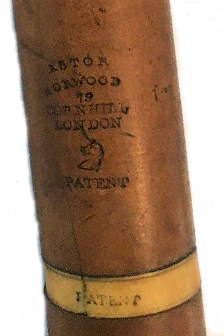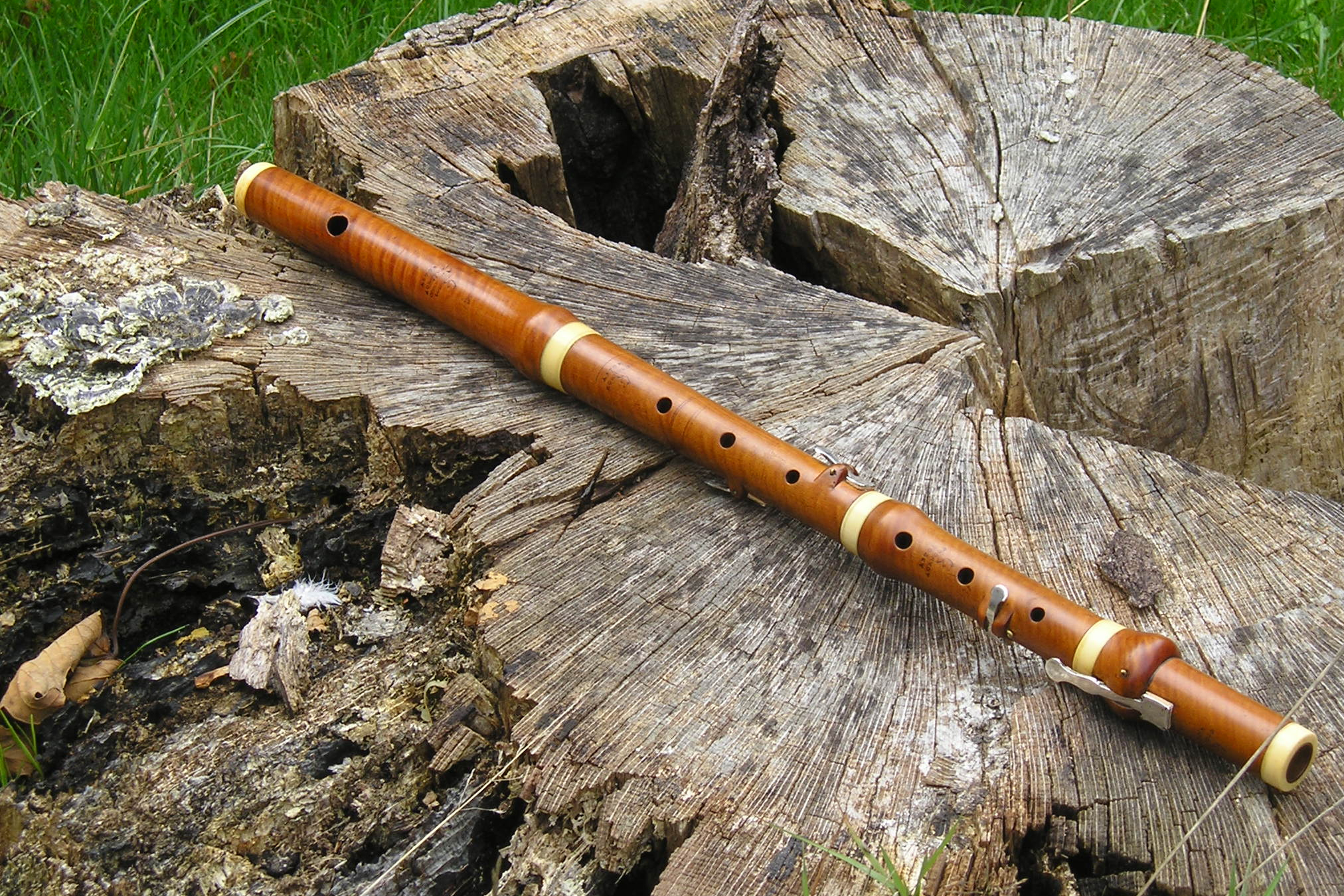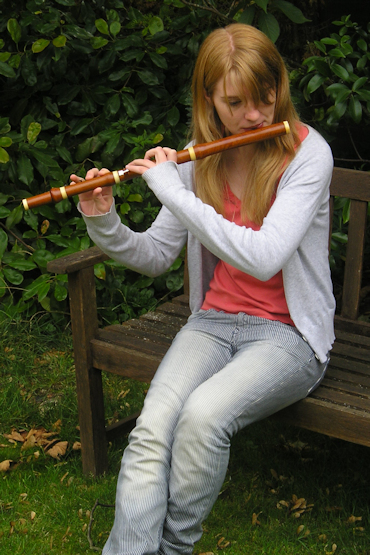John Stallard's Flute
by Tim Marshall When my friend, local farmer John Stallard brought an old musical instrument in a Tesco carrier bag along to the pub one Sunday lunchtime, I didn't realise what an interesting voyage of discovery it was to set me off on.
along to the pub one Sunday lunchtime, I didn't realise what an interesting voyage of discovery it was to set me off on.He and his sister Ann had been clearing out their mothers possessions and found it at the back of a wardrobe. John could vaguely remember it from his childhood but not where it came from or if anyone ever played it.
When I put it together it was obvious it was an old fashioned flute; and although it was clearly very old, it was complete and in fairly good condition.
We could see that it had the words ASTOR HORWOOD CORNHILL on it and a unicorn's head logo.
I was going up to London a couple of weeks later and I ask John if he would like me to take it with me and get a professional opinion.

 After a few enquiries, I decided the best place would be All Flutes Plus in Warren Street. The people there were very helpful, told me that it needed refurbishing and put me in touch with David Murray a flute repairer from Fife in Scotland.
David made a brilliant job not only of refurbishing it but also of researching its history.
The problem of getting someone to play it was solved once again in the pub. One of the bar staff Amy put me in touch with her friend, a young flautist called Hannah Tew. Hannah, after several weeks of getting used to its old fashioned system, played it at a charity concert to raise fund for LoveRussia (how times change!).
After a few enquiries, I decided the best place would be All Flutes Plus in Warren Street. The people there were very helpful, told me that it needed refurbishing and put me in touch with David Murray a flute repairer from Fife in Scotland.
David made a brilliant job not only of refurbishing it but also of researching its history.
The problem of getting someone to play it was solved once again in the pub. One of the bar staff Amy put me in touch with her friend, a young flautist called Hannah Tew. Hannah, after several weeks of getting used to its old fashioned system, played it at a charity concert to raise fund for LoveRussia (how times change!).
A Short History of Astor Horwood
Georg (George) Astor came to London from Germany around 1770 and gained employment as an instrument maker. He was later joined by his brother Johann (John Jacob) and they formed Astor and Co. using a unicorn head as their logo. In 1883 John left for America. (see footnote). By 1880 Astor and Co. were advertising as "Manufacturers of Grand and Small Pianofortes and Musical Instrument Maker to His Majesty's Army" . George had expanded into piano, organ and brass instruments as well as music publishing.George died in 1813 and passed the business on to his widow Elizabeth, who, shortly afterwards, went into business with George Horwood. And there we have it - Astor Horwood. The partnership ended in 1818 when Elizabeth went into partnership with her son William. So we can quite confidently say that the flute was made between 1813 and 1818.
Footnote - a tale of wealth and tragedy.
John Jacob Astor, tired of making flutes in London, decided on a career change - so he went to America to trade fur with Red Indians! He later bought large tracts of land in what was to become Manhattan. When he died his estate, in today's figures was conservatively estimated at 1.2 billion dollars. He was America's first multi-millionaire.In 1897 John Jacob Astor's great-grandson, John Jacob Astor IV built "the world's most luxurious hotel" the Astor next to his cousin's (William Waldorf Astor) Waldof Hotel to form the Waldorf-Astoria. John Jacob Astor IV died on the 15th April 1912 - on the Titanic. In the film, his character is the one who meets his end as the chandelier crashes down the grand staircase. His estate, in today's figures was estimated at 102 billion dollars.
Whilst putting this article together for the website, I googled "Astor Horwood flute" and found one for sale on ebay for $1.700. John has put his in the safe!



